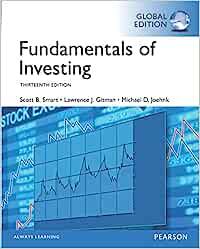Technical analysis looks at the demand and supply for securities based on trading volumes and price studies.
Question:
Technical analysis looks at the demand and supply for securities based on trading volumes and price studies. Charting is a common method used to identify and project price trends in a security. A well-known technical indicator is the Bollinger Band. It creates two bands, one above and one below the price performance of a stock. The upper band is a resistance level and represents the level above which the stock is unlikely to rise. The bottom forms a support level and shows the price that a stock is unlikely to fall below.
According to technicians, if you see a significant “break” in the upper band, the expectation is that the stock price will fall in the immediate future. A “break” in the lower band signals that the security is about to rise in value. Either of these occurrences will dictate a unique investment strategy.
Replicate the following technical analysis for Amazon.com (AMZN)
• Go to http://www.finance.yahoo.com
• Symbol(s): AMZN
• In the left-hand column, click on Interactive Chart.
• Select a 5- year chart.
• Click on Indicator.
• Choose Bollinger Bands.
• The price performance graph for Amazon stock with an upper and lower Bollinger Band should appear.
• Make sure that the graph covers, at a minimum, the first six months of 2015.
Questions
a. On approximately April 20, 2015, what happened to the upper band (resistance level)
of Amazon stock?
b. During the following nine days, how did the price of the stock behave?
c. Is this in line with what a technician would predict?
d. What strategy would a technician have undertaken on April 20?
e. At around the same time, what happened to the lower band (support level) of Amazon stock?
f. How did the stock behave through the month of May 2015?
Step by Step Answer:

Fundamentals Of Investing
ISBN: 9781292153988
13th Global Edition
Authors: Scott B. Smart, Lawrence J. Gitman, Michael D. Joehnk





